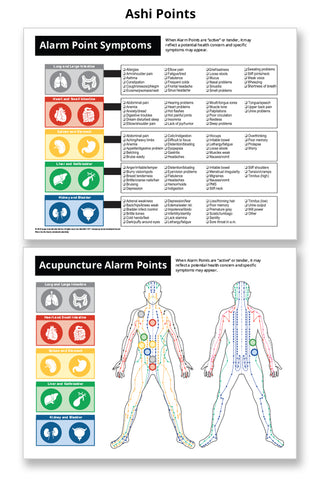
Steps of Care - Poster
Full color 18 x 24 in. poster. This poster is a great tool to help you get across the steps of care in a clear and visually appealing way. This poster also goes hand and hand with our Steps of Care brochure if you think your patient needs a take home version.
This poster gets across the main steps that every patient will go through during their care. The poster is visually appealing, colorful and will help you clearly and easily get your message of "phased" care across to your patients.
Here's how to get the most out of this poster:
After you have gone through the report of findings with your patients, you should then talk about their care plan and treatment frequency. That's when this poster comes in handy.
Step One — Relief Care. Patient begins acupuncture treatment to receive quick relief from pain, discomfort and other symptoms. In this phase patients have obvious symptoms and signs. They are coming to you because something is "out-of-whack" and they are usually suffering and in pain.
Relief care is designed to get them out of pain fast. This type of care allows you to help your patients feel better faster. Each visit builds on previous visits, paving the way toward eliminating their initial problems and complaints.
Each dot above the thick black line represents a treatment. In relief care, the dots are closer together because treatments are more frequent. The reason for this is because you want to help patients get out of pain fast. In order to make this happen, treatment frequency is up in order to keep the pain at bay and pave the way toward having fewer symptoms and signs.
As you progress across the thick black line, it moves up and down. This indicates that there may be times after treatment when they feel better, and times when they may have a slight relapse. I'll let them know that this is normal. As patients feel better, activity will naturally increase. This can lead to small flair ups, hence, the lines moving upwards and downward.
As patients improve, treatments will spread out over time. That is pictured with the blue dots and the paragraph that talks about corrective care.
Step Two — Corrective Care. Patient signs and symptoms have been reduced, and visits are less frequent. This phase maintains and supports the changes achieved and provides a foundation for deeper healing. This is also the time when underlying imbalances can be addressed.
Even though a patient may not be experiencing symptoms, it is important to remind them they need to continue treatment to strengthen, build and support their body and mind. Stopping care now could disrupt the progress already achieved, and even simple activities could cause a relapse.
After the blue dots, you'll notice a fork in the thick black line. It's a time for patients and practitioners to make a decision. After steps one and two have been addressed and patients feel 90% better, it's time to let them know they need to make an important choice to either continue care or stop care.
If patients choose to discontinue care, then they may wind up on the symptom roller coaster. They may feel fine then get a flair up, then they're fine and then a flair up, etc. They come in get better, leave and then flair up, then come in again, get better leave and the cycle goes on and on and the roller coaster ride just keeps on going.
Step Three — Maintenance and Wellness Care. This type of care preserves all the progress they have made. Visits may be monthly, every other month or seasonal. Preventative maintenance tune-ups further strengthen their body's resistance keeping them healthy, balanced and potentially free from illness. Little imbalances may be caught before they become major concerns.
Maintenance and Wellness care is the root of healing. In ancient times, acupuncturists were only compensated as long as their patients remained healthy. If they became ill, it was their duty to get them well again, without compensation. That is true wellness care!
That's a simple explanation as to how to use this poster.
Full color 18 x 24 in. poster
Posters are shipped separately in a tube via USPS, regardless of the shipping method you choose.




